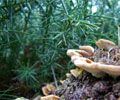Mold and Asthma: A Dangerous Combination
Mold, like other allergens and dust mites, can be dangerous triggers for breathing ailments such as asthma. This is especially true in the older and younger population. In fact, exposure to mold and dampness in the home can double a child’s risk of developing asthma. While genetics plays a role as well, eliminating excess moisture in the home will greatly reduce the development of mold spores into the mold odors that seem to affect a child’s respiratory health.
There are several symptoms your child may exhibit if they are reacting to a unknown source of mold in the home. Remember, mold does not have to be seen to be present. Mold can be located behind walls, underneath fixtures and appliances, as well as in the foundation, on the roof, or in the ceiling tiles. Asthma symptoms to look out for include the following.
- Wheezing: If your child’s breathing makes a high-pitched whistle when breathing in and out, they are wheezing. If the wheezing is mild, it will only be heard during the exhale. Severe wheezing will be noticeable throughout the entire breath, inhale and exhale. It is important to know that during an asthma attack, no wheezing will be present if there is trouble breathing. In addition, wheezing may signal another, more serious ailment, and the absence of wheezing does not eliminate the absence of asthma.
- Coughing: Asthma sufferers are more likely to have coughing symptoms than wheezing symptoms. Exercise-induced or nighttime asthma have the hallmark symptom of coughing. Coughing will usually be present in the very early morning hours, such as in the middle of the night.
- Pain and infections: Your child may feel pain in the chest when trying to inhale and exhale, due to a constriction of the lungs. There may also be a history of painful coughing or respiratory infections. Most children who have recurring bronchitis are asthma sufferers.
Mold can be dangerous to these children because while a mild asthma attack may not cause any permanent damage, having a severe episode is enough to cause the inability to breath and function. Considering that children usually spend most of their days at school, and are often involved in exercise and sports on the playground or after school, it is important to keep children’s respiratory systems as healthy as possible.
Symptoms during a mild attack can include becoming out of breath during physical activity, feeding, or talking. For instance, a child may take longer to eat because they need frequent interruptions for more air. Moderate episodes caused increased breathlessness during talking and feeding, while severe asthma attacks can render a child breathless while simply sitting up or sleeping. This can lead to confusion, blackouts, and breathing cessation.
While mold is not necessarily the number one asthma trigger for children, following some prevention methods, and eliminating mold the instant it is suspected, is extremely important in maintaining children’s respiratory health and function. You could reduce the chances of your child developing asthma by half, which is a great incentive to know how to identify and treat mold in your home.
